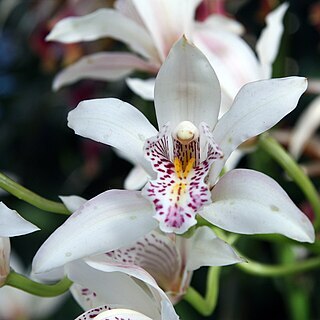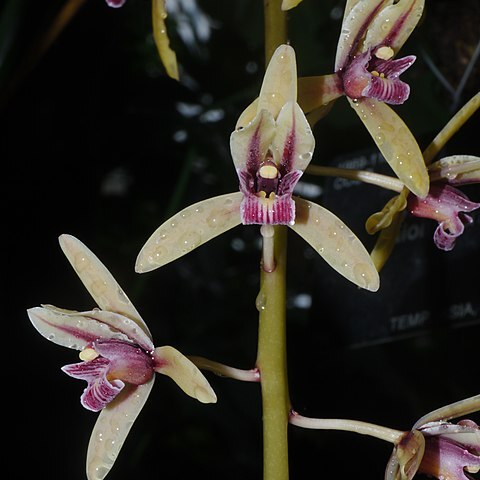Epiphytic, or rarely terrestrial, clumping orchids with pseudobulbs or slender woody stems. Two native species are not typical epiphytes, living as they do inside tree hollows and cavities and spreading by rhizomes. Pseudobulbs small to large, crowded. Leaves few to several per stem, long, narrow. Inflorescence racemose, short to long, arising from basal nodes. Flowers resupinate, small to large, often colourful. Sepals and petals free, all of similar shape and size. Labellum either hinged to apex of short column foot or base of column or fused to sides of column. Labellum lamina 3-lobed; lateral lobes column-embracing; midlobe porrect to curved. Callus ridges 1 or 2.


